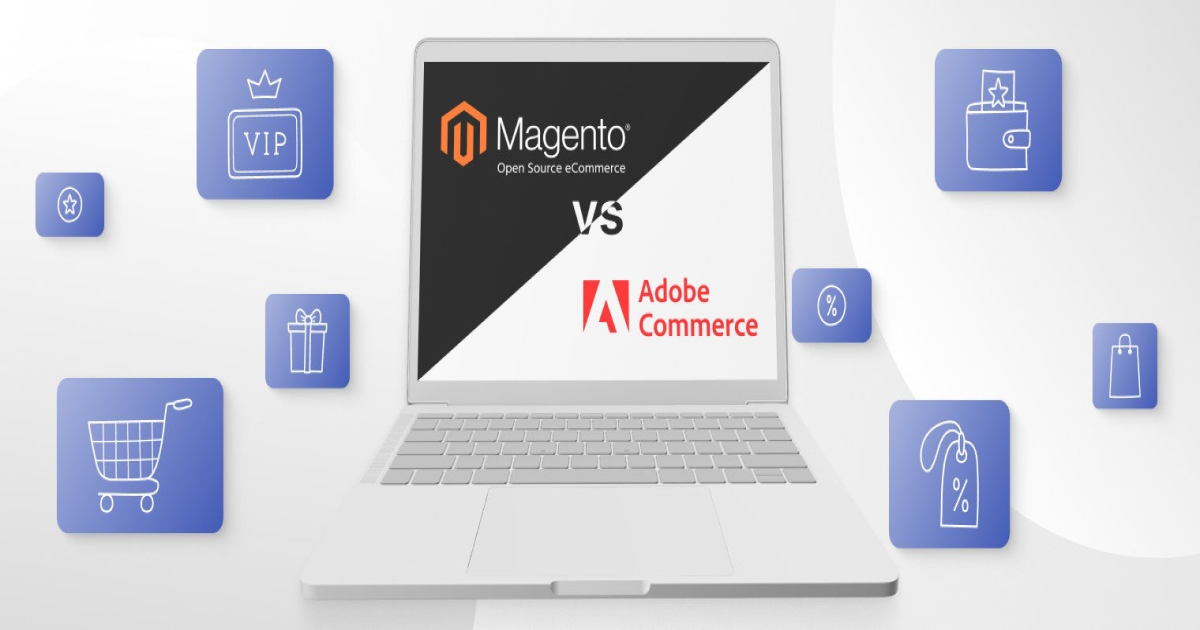13 Most Common Magento Interview Questions & Answers
Introduction
When it comes to e-commerce platforms, Magento stands out as one of the most popular and widely used options. As a powerful and flexible open-source system, Magento enables businesses to create feature-rich and customizable online stores. With its extensive capabilities, employers often seek skilled Magento developers and administrators to manage their e-commerce websites effectively. If you’re preparing for a Magento job interview, you’ll likely encounter some common questions that are essential to assess your knowledge and expertise in the field. In this article, we’ll cover the 13 most common Magento interview questions along with detailed answers to help you excel in your interview preparation.
1. What is Magento?
Magento is a robust and scalable e-commerce platform developed using PHP. It was first introduced in 2008 and quickly gained popularity due to its flexibility and feature-rich nature. Magento offers both free and paid versions, known as Magento Open Source (formerly Magento Community Edition) and Magento Commerce (formerly Magento Enterprise Edition), respectively. This platform provides merchants with a powerful set of tools to create and manage their online stores efficiently.
2. Key Features of Magento
Magento comes equipped with a plethora of features that make it an ideal choice for e-commerce websites. Some of the key features include:
- Extensibility: Magento allows users to integrate third-party extensions and modules to enhance the functionality of their stores.
- Mobile Responsiveness: The platform offers mobile-friendly designs, ensuring a seamless shopping experience across various devices.
- SEO-friendly: Magento provides built-in SEO features, enabling better search engine visibility and rankings.
- Multi-store Management: Merchants can manage multiple stores from a single admin panel, streamlining operations.
- Advanced Search Options: Magento offers advanced search capabilities, making it easier for customers to find products.
- International Support: The platform supports multiple languages and currencies, facilitating global business expansion.
- Analytics and Reporting: Magento provides comprehensive analytics and reporting tools to track store performance and customer behavior.
3. Magento Architecture
Understanding Magento’s architecture is crucial for developers working with the platform. Magento follows a modular structure, where each module represents a specific functionality. The architecture consists of the following components:
- Module Layer: The core functionality of Magento is organized into modules, promoting code reusability and maintainability.
- Presentation Layer: This layer deals with the appearance of the website and includes themes, layouts, and templates.
- Service Layer: The service layer acts as an intermediary between the web server and the database, handling business logic and data manipulation.
- Database Layer: Magento uses the EAV (Entity-Attribute-Value) database model, allowing for flexible and extensible data storage.
4. Magento Modules and Extensions
Magento’s modular architecture allows developers to create custom modules or integrate third-party extensions to add specific functionalities. Modules are self-contained units that can be enabled, disabled, or customized as needed. Popular extensions are available in the Magento Marketplace, providing solutions for various e-commerce requirements, such as payment gateways, shipping methods, and product enhancements.
5. Themes and Templates in Magento
The visual appearance of a Magento store is determined by themes and templates. Themes define the overall look and feel of the store, while templates control the layout and content presentation. Magento offers a wide range of pre-built themes, and developers can also create custom themes to match the brand’s identity.
6. Managing Products in Magento
In Magento, the product catalog plays a crucial role in e-commerce operations. Merchants can efficiently manage products by creating categories, setting attributes, and updating inventory. The platform supports various product types, such as simple, configurable, and virtual products, allowing businesses to offer diverse products to their customers.
7. Payment Gateways and Shipping Methods
Magento integrates with multiple payment gateways, enabling secure and seamless online transactions. Additionally, it supports various shipping methods, providing customers with flexible delivery options. Ensuring a smooth checkout process is essential for enhancing customer satisfaction and encouraging repeat business.
8. Security in Magento
Security is of utmost importance for any e-commerce website. Magento incorporates robust security features, including data encryption, secure payment processing, and protection against common vulnerabilities. Regular updates and security patches are essential to keep the website secure and safeguard customer data.
9. Performance Optimization in Magento
Fast-loading websites are crucial for retaining customers and improving search engine rankings. Magento offers several performance optimization techniques, such as caching, image optimization, and code minification. Implementing these strategies enhances the overall website speed and performance.
10. Magento Database Management
The Magento database stores critical information about products, orders, customers, and more. Efficient database management is vital to ensure data integrity and optimize website performance. Regular backups and proper indexing contribute to a stable and well-performing e-commerce store.
11. Magento Upgrades and Best Practices
Staying up-to-date with the latest Magento version is essential to access new features and security enhancements. However, upgrading requires careful planning and testing to prevent compatibility issues. Following best practices, such as using version control and staging environments, simplifies the upgrade process.
12. Troubleshooting and Debugging in Magento
As with any complex system, issues may arise in Magento. Efficiently diagnosing and resolving problems is crucial to minimize downtime and maintain a positive user experience. Magento provides debugging tools and logs to help developers identify and fix issues effectively.
13. Magento Community and Resources
Being part of the Magento community offers numerous benefits, including access to forums, user groups, and online resources. Engaging with the community allows developers to learn from others, share knowledge, and stay updated on the latest trends and developments in the Magento ecosystem.
Conclusion
In conclusion, excelling in a Magento interview requires a solid understanding of the platform’s key concepts, features, and best practices. We have covered the 13 most common Magento interview questions and provided comprehensive answers to help you prepare effectively. Remember to emphasize your hands-on experience, problem-solving abilities, and passion for creating exceptional e-commerce experiences. By mastering Magento’s intricacies, you’ll position yourself as a valuable asset in the competitive e-commerce job market. Good luck with your interview preparations!





